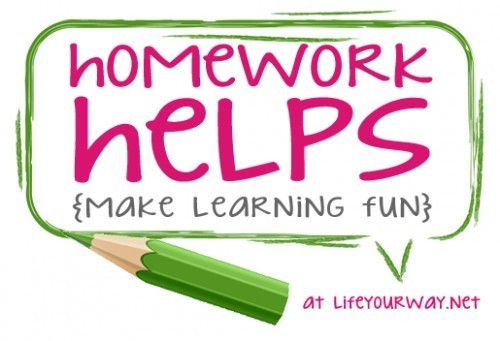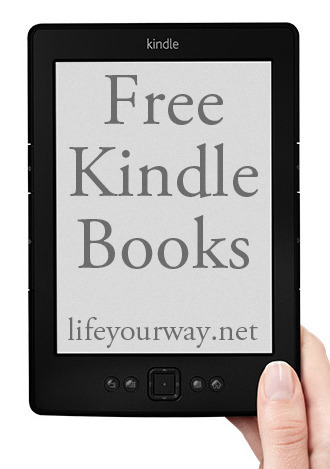Mandi Ehman's Blog, page 119
April 25, 2013
Help for Your Child’s Handwriting
The following post is from Jennifer, a lifelong educator:

See all of the Homework Helps posts here.
Some people say that handwriting isn’t important because so much of today’s communication is digital. I believe it’s important for children to be proficient at both. A computer is not always an option and whether you’re an adult or child, your handwriting needs to be legible if you want people to know what you’re trying to say.

source: topgold
Use these hints to help your child develop better control over their penmanship:
If your child is just beginning to write, teach them the correct grip:
The pencil is held in a stable position between the thumb, index and middle fingers.
The ring and little fingers are bent and rest comfortably on the table.
The index finger and thumb form an open space.
The wrist is bent back slightly, and the forearm is resting on the table.
The pencil is held about 1-2 cm from the tip.
If writing is illegible and the pencil grip is wrong:
Note: Occupational therapists do not encourage changing a pencil grip if the writing is legible.
Consider a pencil grip. It helps little fingers to stay in the proper position.
Or, use a permanent marker to put three dots on the place their fingers should go.
You could also try putting a rubber band on the pencil and teach them to keep their fingers above that spot.
Give positive feedback when you see your child using the correct grip.
Print a photo of proper pencil grip and have your child check theirs against the picture.
Provide lots of different media so that’s it fun to practice: chalk, crayons, and markers, then write on different surfaces: construction paper, poster board, the sidewalk, even sandpaper.
If the child pushes too hard on the paper:
Try using a mechanical pencil.
Encourage your child to practice writing a word so lightly that they can erase it without leaving any marks. Give them a sticker for every three words they complete successfully.
Practice writing “skinny” words, with tall, thin letters.
Use a feather dipped in paint and make shapes that require a more delicate touch.
If the child writes too lightly:
Use a larger pencil that leaves a darker line.
Practice writing with markers.
Have the child rub a crayon hard on a piece of paper to make layers of wax. Then use a pencil to dig through the wax to write letters.
To develop muscle strength:
Play often with clay.
Play X’s and O’s, encouraging your child to make the marks as dark as yours.
Use tweezers to pick up small beads or raisins to transfer to a container.
Water plants with a spray bottle.
Squirt a water gun at a target.
Use finger paint on paper or shaving cream on a counter to encourage bold shapes and letters.
As with all of parenting, be patient. Don’t make handwriting a battleground. Affirm growth and focus on the positives!
Do you think it’s important to work on neatness in handwriting? What activities have helped your child improve?

Jennifer is passionate about children and education. She homeschooled her two sons for five years, established and directed a Christian school in Maryland for 20 years, and currently teaches in a public school in a Chicago suburb. She loves investing in relationships and delights in every moment that she spends with her family.
Help for Your Child’s Handwriting is a post from Life Your Way
© 2010-2013 Purple Martin Press, LLC | All rights reserved - This feed is provided for the convenience of Family Your Way subscribers. Any reproduction of the content within this feed is strictly prohibited. If you are reading this content elsewhere, please send an email to contact@yourway.net to let us know. Thanks.


Free Kindle Books {4/25/13}

One of the most popular features of our sister site, Jungle Deals & Steals, are our free Kindle book lists. With 15-20 free ebooks every day, these are a great way to load up your Kindle without breaking the bank, and Kindle books can also be read on smartphones, computers and tablets with the Kindle app from Amazon.
Here’s a quick list of some of the freebies that are currently available, but be sure to head over to Jungle Deals & Steals for new freebies today…or subscribe to our daily freebies email so you don’t miss a single book!
Fiction
EARTHLY TIES by Kimberly Silvinski
by Kimberly Silvinski
Genre: Science Fiction
Reviews:  (15 reviews)
(15 reviews)
Florian’s Gate (Priceless Collection Book #1) by T. Davis Bunn
by T. Davis Bunn
Genre: Action & Adventure
Reviews:  (13 reviews)
(13 reviews)
Living with Fred (The Fred Books) by Brad Whittington
by Brad Whittington
Genre: Coming of Age
Reviews:  (22 reviews)
(22 reviews)
Love Comes Blindly (book 5) (The Fielding Brothers Saga) by Marie Higgins
by Marie Higgins
Genre: Historical
Reviews:  (3 reviews)
(3 reviews)
The Job Offer by Eleanor Webb
by Eleanor Webb
Genre: Contemporary
Reviews:  (1 review)
(1 review)
Chasing Justice (Book 1) (Piper Anderson Series) by Danielle Stewart
by Danielle Stewart
Genre: Suspense
Reviews:  (6 reviews)
(6 reviews)
Nonfiction
Natural Green Home Cleaning For Beginners:Best Innovative Eco-Friendly Cleaning Solutions for Your Home from Kitchen, to Children’s Toys, and Even Your Car and Microfiber Cleaning by R. Kishore
by R. Kishore
Genre: Cleaning & Caretaking
Reviews:  (4 reviews)
(4 reviews)
Children’s Books
Dancing with the Snails (Running with snails) by Jonathan Smuda
by Jonathan Smuda
Genre: Games
Reviews:  (2 reviews)
(2 reviews)
99 Amazing Animals Book Bundle: 33 Cute Animals + 33 Dangerous Animals + 33 Ugly Animals by P.K. Miller
by P.K. Miller
Genre: Animals
Reviews:  (1 review)
(1 review)
The Mango Tree and Other Stories by Rachna Srivastava
by Rachna Srivastava
Genre: Short Stories
Reviews: No Reviews Yet!
See more Kindle freebies here.
Free Kindle Books {4/25/13} is a post from Life Your Way
© 2010-2013 Purple Martin Press, LLC | All rights reserved - This feed is provided for the convenience of Money Your Way subscribers. Any reproduction of the content within this feed is strictly prohibited. If you are reading this content elsewhere, please send an email to contact@yourway.net to let us know. Thanks.


April 24, 2013
5 Tips for Getting an Allergy-Friendly, Real Food Meal on the Table Fast
The following post is from Amy of Simply Sugar & Gluten-Free:

source: Amy Green
One of the biggest obstacles for anyone switching to a gluten-free, allergy-friendly diet is time. At first, searching for ingredients takes time. Figuring out what to cook takes time. Preparing the meal takes lots of time. And if you’re like most of us, you have lots of flops early on.
It’s also likely that you can’t rely on some of the store-bought items you used to. You probably find that much more of what you’re eating is whole foods based. This is a good thing, though it often takes more time to prepare than something out of a box. Now, all you need is a little of that precious time back, right?
Here are 5 ways you can get your allergy-friendly meals on the table quickly.
Meal Plan.
Meal planning is a learned skill. It’s not something that you’ll be able to do quickly and efficiently the first time around. Or the second time for that manner. After time, though, it will become second nature and you’ll even be able to plan your meals while taking a mental inventory of your refrigerator, freezer, and pantry. Try this weekly menu plan, this menu plan with a shopping list, or this series on Meal Planning Made Simple.
Prep ingredients ahead of time.
I don’t always have time to chop all the fresh ingredients that go into our meals on a daily basis. So, when I bring home our groceries for the week I prepare some of the fresh ingredients then. They go into a container with a label that tells me what meal they’re for. When it’s time to cook dinner, I just pull them out of the refrigerator and go.
Get all of the ingredients you need out at once.
Take a cue from Rachael Ray here. If you’ve ever watched 30 Minute Meals, she pulls all of the ingredients she needs at once and then starts cooking. Though I don’t have a staff to put everything in once place before I start cooking, I can waste a lot of time looking for ingredients or going back and forth to the refrigerator.
Make double and triple batches.
Once I find a freezer-friendly meal I like, I make double and triple batches when they’re on my meal plan. The extra gets frozen and pulled out for a quick weekday meal. Soups, some casseroles, quick breads, and most desserts freeze well. For pasta dishes, I make large batches of sauce and then cook off my pasta on the day I’m serving the meal.To keep track of what’s in your freezer, use this freezer inventory list. And, this freezer menu will come in handy too.
Stock your pantry.
It took a while for me to build up my pantry, but now that it’s stocked I can easily and quickly pull together a meal from the ingredients I keep on hand. Whenever I’m running low on an item, I just add it to my weekly grocery list. And, if I don’t have a particular ingredient called for in a recipe, I have something similar that will work. Here’s how I stock my pantry and how I keep track of what I have on hand.
The recipe pictured above is one of our favorite, quick meals – One Pot Chicken Beans & Rice.
What are your top tips for saving time in the kitchen?

A stay-at-home mom, wife, and passionate cook, Amy strives to make each meal healthy and delicious. When she’s not doing laundry, dishes, or caring for her son, she plays around with food in the kitchen developing new recipes, which she shares at Simply Sugar & Gluten-Free. Amy also publishes The Balanced Platter and authored the book Simply Sugar & Gluten-Free: 180 Easy & Delicious Recipes You Can Make in 20 Minutes or Less.
5 Tips for Getting an Allergy-Friendly, Real Food Meal on the Table Fast is a post from Life Your Way
© 2010-2013 Purple Martin Press, LLC | All rights reserved - This feed is provided for the convenience of Food Your Way subscribers. Any reproduction of the content within this feed is strictly prohibited. If you are reading this content elsewhere, please send an email to contact@yourway.net to let us know. Thanks.


6 Advantages of NOT Owning Your Dream House
The following post is from Andrea of Simple Organized Living:

source: Andrea
Do you have a “dream house”?
Maybe it’s a dream house you know you’ll never actually buy, but you still love thinking about — or maybe it’s a dream house you’re actively saving to buy or build.
Either way, I can TOTALLY relate!
For as long as I can remember, I’ve always wanted to buy an old farmhouse, gut it, and renovate every square inch. It didn’t need to be a huge mansion or a cost a fortune. In fact, Dave and I actively sought out foreclosed homes, hoping to find an amazing deal on a diamond-in-the-rough with tons of potential.
I scoured Craigslist and local home-listing sites on a daily basis, and we walked through countless homes for sale. Some had potential, but none of them ever came close to satisfying all the must-have requirements we deemed necessary in order to make the purchase.
But then we found it — our diamond in the rough — our dream house!
It’s a 120+ year old farmhouse with a big front porch, and it satisfied every single one of our must-have requirements. Plus, it was in our budget and in a fabulous location.

source: Andrea
Win, win, win!
It’s been a little over 2 years since we moved in, and we’re almost finished renovating the entire main floor. Our next project is the landscaping, which we plan to tackle this summer, then we’ll renovate the upstairs, then the basement, then…
I think you get the idea… lots of work!
We love our home and although the renovating process can be tiresome at times, we wouldn’t trade our old farmhouse for anything. However, after living in a “non-dream house” for almost 5 years before purchasing our farmhouse, I can confidently say that there are many benefits to NOT owning your dream house.
If you’re still waiting, and dreaming, and saving, and searching for your some-day dream house, keep these thoughts in mind:
1. A non-dream house is often more cost effective.
We got a fabulous deal on our farmhouse, so we could afford to make a substantial down-payment and still have enough for renovations. However we never could have afforded to buy our dream house when we were first married (fresh out of college.) Our first home was much smaller and much less expensive. It had more reasonable insurance premiums and tiny utility bills compare to our old, uninsulated farmhouse.
Owning our non-dream house for a few years gave us a chance to ease into the financial aspects of home ownership and save a lot of money in the process.
Also, there’s a good chance you won’t have as many renovation expenses in a non-dream house. I know that when we lived in our first home, we only did a few minor, relatively inexpensive projects to spruce things up — because we knew we wouldn’t be there long-term. However, now that we’re in the house we plan to stay in for a long time, we’ve put a significant amount of money into renovating and updating it (that was our intention when we negotiated a lower selling price).
2. A non-dream house is a great place to start.
Neither Dave or I had ever owned a house before, so buying a smaller home was the perfect place to start. We had plenty of room for just the two of us, but we could also easily manage to care for our home without an extensive amount of extra effort.
Our non-dream house was less upkeep than our current home (both inside and outside) less to clean, and less to maintain!
I never thought owning a home would be a lot of work, but there was SO much I needed to learn. I’m glad we had the chance to start with a smaller, more manageable home while we “learned the ropes” of home ownership.
3. A non-dream house gives you time to figure out what you want and what you DON’T want.
Even though I knew I wanted an old farmhouse, that’s about all I knew. I definitely did not have all the details worked out, nor did I realize how much some of those details would cost. So, while we were still living in our non-dream house, I spent quite a bit of time compiling all sorts of ideas, learning about different materials, clipping magazine photos, and researching potential costs.
Also, after living in our non-dream house for a few years, I realized that although I thought I always wanted a formal dining room, 20+ acres of land, and lots of red; I actually preferred a casual eat-in kitchen, much less land, and neutral colors throughout.
I realized that I didn’t want shallow kitchen drawers, I didn’t want a closed-off floor plan, and I didn’t want a basement laundry room. I wanted lots of electrical outlets, a designated home office area that was connected to the living space of our home, and I wanted our home to be set back off the road.
Our first house helped me to realize so many big and small things that I really liked — and even more things that really bugged me! I would never have realized many of them things without first living in a non-dream house, and by learning on our first house, I was able to implement all these “likes” and remove all the “dislikes” as we renovated our farmhouse.
4. A non-dream house allows time for other things.
We purchased our farmhouse with the intent of gutting and renovating it — so while I realize our situation might be a bit different than others, I know plenty of people who build or buy their dream house and spend a ton of time and energy focusing on the building, decorating, and furnishing process.
I’m normally a pretty decisive person, but I can’t even begin to list off all the times when I debated, wondered, and worried about making the “right” choice for a certain design, idea, color, piece of furniture, etc. The renovation process is fun — but it’s also overwhelming and sometimes it feels like I’m constantly thinking about “what needs to be done next”.
When we lived in our non-dream house, we still did some updating, but we didn’t agonize over every decision because we knew the next homeowners might want to change it anyway. We did what we wanted to, we didn’t over-think things, and we had lots more time for other activities.
5. A non-dream house offers opportunities to learn and try new things.
We’ve most definitely learned a lot over the last 2+ years renovating our farmhouse, but back in our non-dream house, we learned even more. We were always experimenting and trying new things.
How would this paint color look?
Could I make my own curtains?
What would happen if we ripped up this carpet and did our own DIY floor?
Would that plant live if I dug it up and split it?
Could this shrub survive in all sun or did it need part shade?
My list could go on and on. The point is, we were always learning new things and experimenting with DIY projects — many of which failed! However it didn’t matter because if it didn’t work, we usually weren’t out much money, and we’d just tried something else until we figured it out.
We knew we weren’t going to live in that house forever, so we just had fun and never turned down a good learning opportunity.
Now that we have a more long-term home renovation plan, busier careers, and a fussy toddler, we don’t necessarily have the time or desire to learn and experiment. We just do what we know works, we do it right, and we do it once. Done. Cross it off our list and move onto the next thing!
Without our non-dream house, we would still be stuck in that “learning” phase and unable to quickly implement the ideas and techniques that would give us the results we want.
Obviously, we love our home and we’re (mostly) enjoying the long process of transforming this farmhouse into OUR dream house (read more about our farmhouse here).
However, I’ll always fondly remember our non-dream house, and how it helped prepare us for the process of searching, buying, and renovating our dream house.
What at about you? What is your favorite thing about your current home? (even if it’s not your dream house)

Andrea Dekker is an avid list maker, pro diaper changer, farmhouse lover, and simple living enthusiast. Her goal is to simplify real life for real families with real budgets, real schedules, and real homes. Follow along at AndreaDekker.com.
6 Advantages of NOT Owning Your Dream House is a post from Life Your Way
© 2010-2013 Purple Martin Press, LLC | All rights reserved - This feed is provided for the convenience of Home Your Way subscribers. Any reproduction of the content within this feed is strictly prohibited. If you are reading this content elsewhere, please send an email to contact@yourway.net to let us know. Thanks.


Printable Color-Me Mother’s Day Cards
The following post is from Jason & Jennifer Bruce of New Season Design :

Flowers, jewelry, books, gift baskets, clothes, photo mugs… These are all great Mother’s Day gifts. But as a mama, the things I cherish most are the thoughtful cards and gifts that Emma (age 8) has made for me. In fact, when holidays approach, she’s started asking my mom to help her create gifts for us.
To encourage your kids to share their artistic talents this Mother’s Day, here are two printable color-me Mother’s Day cards. You can print two cards on standard 8.5 x 5.5 inch cardstock or paper. Flip the page over and print the inside message, or leave it blank and allow the kids to write their own notes inside.
Click here to download or print the color-me cards.
And while the kids are feeling creative, have them put together a Paper Flower Bouquet for Mom, Grandma, or another special lady.
What’s the best Mother’s Day gift you’ve received?

Jason & Jennifer Bruce are the husband-and-wife design team behind New Season Design, where they work together to help clients put their best foot forward online. Jason is a pastor-turned-graphic designer, and Jennifer is a teacher-turned-blog designer who also blogs at The Simple Pen about life, learning and the things she loves.
Printable Color-Me Mother’s Day Cards is a post from Life Your Way
© 2010-2013 Purple Martin Press, LLC | All rights reserved - This feed is provided for the convenience of Family Your Way subscribers. Any reproduction of the content within this feed is strictly prohibited. If you are reading this content elsewhere, please send an email to contact@yourway.net to let us know. Thanks.


April 23, 2013
The Baby Companion: A Faith-Filled Guide for Your Journey through Baby’s First Year
When I was pregnant with our oldest daughter, I devoured as many parenting books as I could get my hands on. I’m pretty good about taking the advice that makes sense to me and leaving the rest, but I’ll admit I was left a bit confused by all the conflicting advice in various books and from various message boards on the internet.
Over the past nine years, I’ve discovered my own mothering style, and while I still seek wisdom from other moms that I know and trust, I’m much less likely to pick up a parenting book that deals with the how-to of child care.
However, as we march steadily towards the birth of our fifth child, I’m facing a four-year gap since the last time we had a baby in the house and reevaluating how we’ll handle things like co-sleeping, feeding schedules and so on.
That’s why I was excited to see The Baby Companion, a first-year baby guide for women of faith who want to treasure those first months and experience God’s presence in the midst of the journey.
Unlike other parenting books, this book is filled with both practical information and encouragement. It’s not the end-all, be-all how-to guide on parenting but a reference for moms packed full of resources, information and advice on scheduling, child development, budgeting, and practical parenting side by side with Scripture and reflections.
With a month-by-month format that follows baby’s progress through the first year — including growth, development, baby care, mommy care, common questions and more — this guide not only provides parenting advice but also tons of medical information about what you can expect at various appointments, what your pediatrician is looking for and so on.
And because it doesn’t claim to be the authority on parenting, there’s plenty of space for each mom to make her own decisions based on her instincts and experience as well.
Pick up The Baby Companion: A Faith-Filled Guide for Your Journey through Baby’s First Year for yourself or add it to your next baby shower gift to encourage and empower the new moms in your life!
This is a sponsored post, but all opinions are 100% mine!
The Baby Companion: A Faith-Filled Guide for Your Journey through Baby’s First Year is a post from Life Your Way
© 2010-2013 Purple Martin Press, LLC | All rights reserved - This feed is provided for the convenience of Family Your Way subscribers. Any reproduction of the content within this feed is strictly prohibited. If you are reading this content elsewhere, please send an email to contact@yourway.net to let us know. Thanks.


Why I Love My Envelope Budget System
The following post is from Kate of Modern Alternative Mama:

image source: public domain photos
The food budget is one area that I manage alone. The rest, my husband and I share (and frankly he does the day-to-day stuff because as long as we agree on the big stuff, I don’t care about the details!). The budget can quickly get out of control if I don’t “manage” it well. I keep learning that lesson over and over and over again…someday I’ll remember to stick with it.
In the last months of my pregnancy, I let a lot of stuff slide. Including the grocery budget. I bought what I could so that we could get through with minimal planning or cooking. But then I felt like I really didn’t have enough money to feed everyone! Oh…sigh. And my husband was frustrated because I kept going slightly over or saying I needed more money to feed everyone!
After my son was born, it was back to the envelope system. Then I remembered why I do it.
The Envelope System
In case you’re not familiar, it’s simple. You pull the allotted amount from your bank account in cash, usually on pay day. Then you separate it out into different envelopes, depending on how much you have decided to spend in different categories.
My grocery budget has these categories:
Milk
Meat
Eggs
Preserving
Bulk
Groceries
I buy the first three items from local farms/butcher, so I set aside those right away. I set aside money for preserving so I can afford to buy the hundreds of pounds of apples, tomatoes, pears, etc. that we will need. The “bulk” envelope is for things like coconut oil, olive oil, almond flour, etc. that I buy every few months in large quantities.
You can read more about my system here, as well as see a real-life example of what I actually bought (and how much I spent) as well as what meals I made with all of it.
But why do I love it?
1. I know exactly what I have.
I know how much money I have and where it is going at all times. I don’t have to wonder if there’s money left in the account or if I have spent something online or via check that hasn’t come out yet (leading me to overdraw accidentally). I know exactly what is there.
2. I can make plans.
I find if I have my money separated out, I can choose meals or items that fit within what I have. I can purposely choose some cheaper foods one week so I can set aside extra money for a bigger purchase the following week. I can fit in some treats. It’s not a guess if the math will “work out” in the end (it won’t, if I don’t do a very specific plan). I know I can do it — or not. This has been great as I’ve planned bulk purchases and have gotten friends to go in with me so I can get a better price. I know I already have the money set aside!
3. I have “more” money!
I really feel like I have more money when I plan this way. I’m not hoping that there’s enough left over after the first couple stores to buy all the items at the last store. I have set aside all this money and suddenly it seems like there is so much more of it. target=”_blank” rel=”nofollow”
4. I’m not caught off-guard.
It used to be that when I needed eggs, I had to beg for more money, or wait until the next paycheck and “hope” there would be enough. Now, I automatically set aside money for eggs. If I don’t need it, fine — I can choose, later, to spend it on something else (right now I have egg money saved, but about 12 dozen eggs in my fridge!). If I do need it, it’s there. I also used to forget about owing my milk farmer and have to scramble to get the money to pay her, often a week late (we pay once a month). That is always set aside too, so it’s no big deal. I feel like a real grown up. 
5. I enjoy the challenge.
I spend sometimes a crazy amount of time seeking out sources of food, comparing prices, keeping a mental or physical list of my best prices, and so on. I set up group buys for items every month or two and deal with collaborating orders, collecting money, and dividing them up once they arrive. But, I like the challenge of finding better sources, better prices, doing a little extra work to produce a cheaper and healthier outcome! It’s fun to me. Am I weird?
Who wants to know how I find all these sources? I have talked to many local readers who tell me their budgets and their “best prices” on various items, and I know there are better prices available to them! I’d love to share how I’ve found them, if anyone is curious.
Do you use an envelope system for your grocery budget? Why or why not?

Kate is a wife and mommy to 4 and is passionate about God, health and food. She has written 7 cookbooks and is planning to release more in 2012. When she’s not blogging, she’s in the kitchen, sewing, or home schooling her children. You can find her at Modern Alternative Mama or contributing to Keeper of the Home.
Why I Love My Envelope Budget System is a post from Life Your Way
© 2010-2013 Purple Martin Press, LLC | All rights reserved - This feed is provided for the convenience of Food Your Way subscribers. Any reproduction of the content within this feed is strictly prohibited. If you are reading this content elsewhere, please send an email to contact@yourway.net to let us know. Thanks.


What to Do with Old Technology
The following post is from Michelle of Mommy Misadventures :

source: FreeDigitalPhotos.net
Today’s consumer technology advancements means that many of us are on a constant upgrading treadmill, moving on to the latest and greatest mobile device/printer/laptop/desktop, etc. But what to do with your “old” technology?
Here’s a few tips to help you get the most use out of your “old” tech.
Hand it down.
Chances are that the “old” technology that you’re upgrading from probably has plenty of life left in it. This is true for most computers less than three years old and mobile devices made within the past two to three years. Passing along your not-so-new devices down to a family member or friend who doesn’t need to be bleeding edge current is a great way to extend the useful life of your old device.
Resell.
While you’ll never get the original full market value for your items, selling your old technology is a good way to make a little extra cash. High demand items like the latest generation of Apple products, as well as higher end digital cameras and lenses, are easier to sell than others.
Donate.
Charitable organizations will often take donations of computer equipment. In the era of school budget cuts, donating your older but usable computer equipment to a school seems like a great idea. But before you donate your equipment, confirm that organization that it will accept the pieces that you are donating.
Refill.
Printer ink cartridges are ridiculously expensive. Rather than throw them away, opt to refill them for a fraction of the cost. You can do this with a printer ink refill kit or take them to a store that will do the refilling for you.
Recycle.
Major retailers like Target and Best Buy often have in-store recycling receptacles for small electronics like cell phones and tablets as well as spent ink cartridges. If you have a newer Apple product, Apple offers a recycling program where you can possibly get store credit towards a new Apple computer or device in exchange for your old one.
Dispose of E-Waste.
During spring cleaning this month, I unearthed more than a few desktop computers as well as a box full of cables, video cards, peripheral devices and hard drives. These clunkers are so obsolete that they are not worth repurposing, selling or donating to anyone.
Computers, printers, and other peripherals are considered electronics waste (e-waste) and cannot be disposed of in your usual garbage pickup for environmental reasons. Every waste management district handles e-waste differently: some have drop off centers available year round while others have seasonal drop-off events. Contact your local waste management service to find out what the e-waste disposal guidelines are in your area.
Schools and organizations sometimes have e-waste collection events that benefit the organization. Ask around your community to find out more about e-waste collection events in your area.
What’s your favorite way of dealing with your old devices?

Michelle Mista is an IT professional, writer and blogger with a love for all kinds of technology. She writes about tech tips and trends for work at home professionals on her portfolio blog and muses about motherhood at Mommy Misadventures. She is on the constant quest to balance life, work and geekery.
What to Do with Old Technology is a post from Life Your Way
© 2010-2013 Purple Martin Press, LLC | All rights reserved - This feed is provided for the convenience of Tech Your Way subscribers. Any reproduction of the content within this feed is strictly prohibited. If you are reading this content elsewhere, please send an email to contact@yourway.net to let us know. Thanks.


April 22, 2013
Weekly Reads + Rereading Your Favorite Books {4/22/13}

I did it! After a two-week break from reading, I picked up my Kindle last week to reread The Hunger Games series (inspired by the Catching Fire trailer that Shaina sent me!). It felt good to use my downtime for reading again rather than just mindlessly zoning out, and I feel like I’ve rediscovered my reading mojo. It also helps that my nausea is becoming less and less frequent and my energy is returning; hello, second trimester!
Head here to see Katie’s post for this week. We also want to know what you’re reading! Add your blog post to the linky below or leave a comment with your favorite reads from this week.
This Week’s Reads

The Hunger Games, Catching Fire and Mockingjay by Suzanne Collins
As I mentioned, I reread this series, which I first devoured in October of 2011, although I’m not quite done the third book yet.
Although I know the reaction to these stories, which have been described as naysayers as gratuitously violent, vary widely, what I love about them is the realness of the characters and the emotions they experience — anger, fear, moments of joy in the midst of heartache, etc., and the strength of Katniss as she fights to protect the people she loves. Yes, the storyline is horrific, and it may seem odd to read about a future society that sends children into a stadium to fight to their deaths, but the violence is portrayed in exactly that way — as horrific and traumatizing and unbearable for Katniss and Peeta as well, and I think there are many lessons that can be taken away from the series.
Rereading the first book, I was surprised by some of the details I noticed that I didn’t remember from my first reading. And the second book — I don’t know if I rushed through it the first time or what, but I’m a little embarrassed to say that the first half or so felt like an entirely new book. Mockingjay, on the other hand, is exactly like I remember it so far, although I think I have a deeper appreciation for the whole series now!
On My Reading List for This Week
We’re heading to Florida for some R&R this week, so I should have plenty of time to read on the 18+ hour drive and subsequent days lounging by the pool! Not sure how many books I’ll get through, but my list for vacation includes:
One Year Lived by Adam Shepard
UnMarketing: Stop Marketing. Start Engaging.
 by Scott Stratten
by Scott StrattenThe Book of Business Awesome / The Book of Business UnAwesome
 by Scott Stratten
by Scott StrattenThe Screwtape Letters by C.S. Lewis
Candle in the Darkness by Lynn Austin
A Question for You
Although there are a few books I’ve reread multiple times (The Screwtape Letters and Lost Child in the Woods among them), I’m usually pretty hesitant to reread books, which is ironic considering how often I reread my favorites when I was a teen. However, rereading The Hunger Games trilogy this past week was a really good experience. I was able to focus on details that I hadn’t paid attention to the first time, and I wasn’t rushing through the story to find out what happened next.
If anything, I’m even pickier about rereading nonfiction, rereading only those books that were so packed full of insight that I feel like a fresh reading will inspire & challenge me again.
How about you? Do you reread books often? How do you decide what to reread? How often do you reread your favorites?
Share Your Reading List
Get a Collection of Gardening eBooks for $7.40 {BundleoftheWeek.com}

Whether you’re a new or experienced gardener, this week’s collection includes a variety of gardening tips for everyone! Learn how to garden without a big budget or a lot of space, discover tips for organic gardening and preserving your harvest, and get organized with custom printables. But don’t wait because this bundle is on sale for 75% off this week only!
With your purchase, you’ll get all five of the following ebooks:
Frugal Gardening 101 by Phoebe Hendricks
Apartment Gardening by Jami Balmet
Simple Food {For Spring} by Shannon Stonger
Heavenly Homemaker’s Guide to Gardening and Preserving by Laura
The Gardening Notebook by Angi Schneider
Even if you’re not interested in this week’s bundle, be sure to sign up for the BundleoftheWeek.com weekly newsletter so you can be the first to know about the latest bundle:
Get a Collection of Gardening eBooks for $7.40 {BundleoftheWeek.com} is a post from Life Your Way
© 2010-2013 Purple Martin Press, LLC | All rights reserved - This feed is provided for the convenience of Green Your Way subscribers. Any reproduction of the content within this feed is strictly prohibited. If you are reading this content elsewhere, please send an email to contact@yourway.net to let us know. Thanks.



 by Elli Yeates
by Elli Yeates



